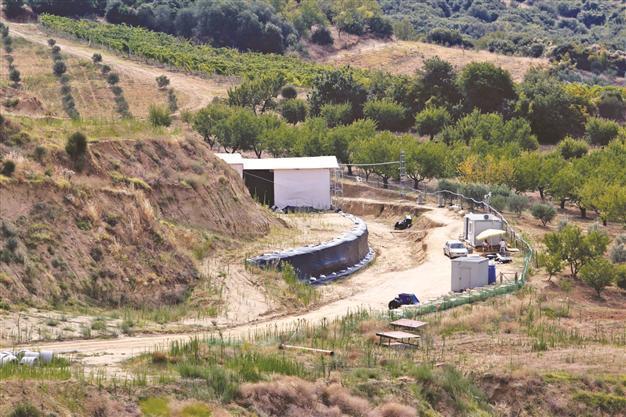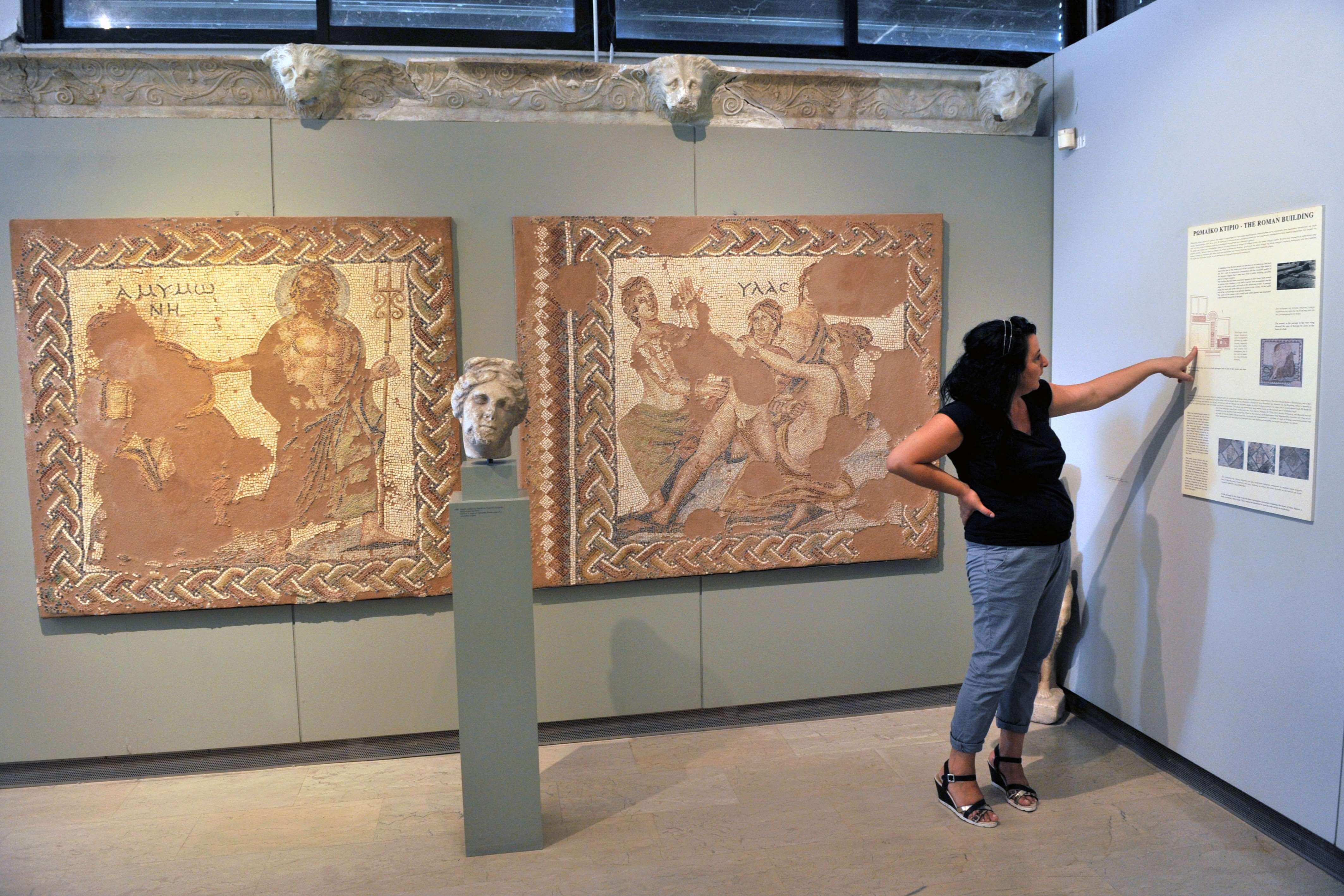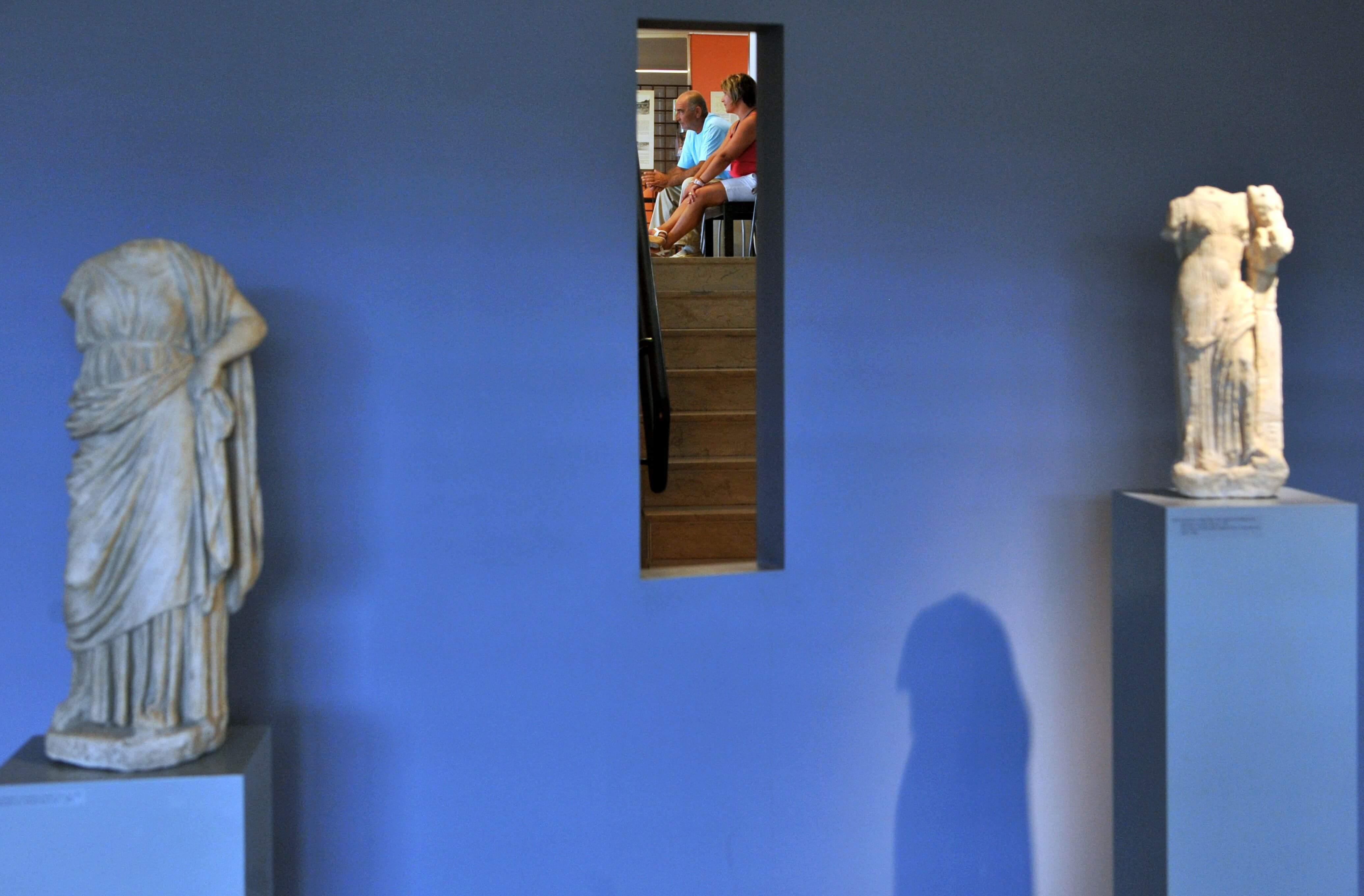A year on, no answers to ancient Greek tomb
AMPHIPOLIS - Agence France-Presse

The photo above is a view of the site where archaeologists unearthed last year a funeral mound dating from the time of Alexander the Great, in Amphipolis. AFP Photos
A year after being hailed as one of Greece’s greatest archaeological finds and a possible resting place of Alexander the Great, the largest tomb ever discovered in the country lies almost forgotten in the blazing summer sun.The buzz of cicadas and wasps gives no hint that Amphipolis, some 60 kilometers from the northern city of Serres, drew a media stampede in August 2014 after authorities de-clared it a “unique” find.
“No one works here anymore. The project is frozen, like everything else in Greece,” said a young guard, referring to the country’s economic crisis that in addition to mass layoffs and revenue cuts has also hit spending on cultural projects.
“We still don’t know if the country is going to run out of money,” he adds, refusing to give his name.
At the time of its discovery, there was speculation that archaeologists had found the tomb of Alexander the Great (356 B.C. to 323 B.C.) or perhaps someone close to him like his mother Olympias or wife Roxana. But a room-by-room search of the massive box-like tomb has failed to give conclusive answers to date.
Though the remains of an elderly woman were found, raising hopes it could be Alexan-der’s mother, the bones of two men, a newborn baby and animals including a horse were also discovered. Out of 550 bone fragments found, 157 had been matched to specific bodies so far, in-cluding that of a fifth person whose sex has not been identified.
Culture Minister Nikos Xydakis has publicly criticized the previous conservative admin-istration over its handling of the excavation. “The way the excavation was carried out and [its] promotion...had elements of a show,” Xydakis said in a televised interview in March.


On Aug. 11, the ministry said significant sums of money and time would be required to make the monument accessible to visitors. “The work required to protect, rehabilitate and highlight the monument is enormous,” it said. The ministry said 200,000 euros had been earmarked after the excavation work was car-ried out, but the imposition of capital controls in June linked to the economic crisis has de-layed the release of funds.
As the scientific world awaits further clarification, a dispute has arisen over whether the tomb is actually Macedonian or was built under the Romans.
Leftist daily Avgi, the newspaper of the ruling Syriza party, on Aug. 9 said a group of ex-perts had dated the tomb to the first or second century B.C. up to 300 years after Alexan-der’s death, and it dismissed efforts to link the monument to his family as a “fiasco.”
The head archaeologist at Amphipolis, Katerina Peristeri, fired off an angry letter to the newspaper to defend her evaluation. “The tomb complex was built in the final quarter of the fourth century B.C. [325-300 B.C.]...and was used until Roman times,” Peristeri said.
“The Macedonians sealed it for protection in the second century B.C.,” she said, adding that a full evaluation would be made in the autumn.
The tomb, measuring 500 meters in circumference and dug into a 30-meter hill, was found to contain sculptures of sphinxes and caryatids, intricate mosaics and coins featuring the face of Alexander the Great.
Built on the banks of the river Strymon, Amphipolis was an important city of the ancient Macedonian kingdom under Alexander. Alexander built an empire stretching from modern Greece to India. He died in Babylon in 323 B.C. at the age of 32 and was buried in the city of Alexandria, which he founded. The precise location of his tomb is one of the biggest mysteries of archaeology.
The Amphipolis tomb’s location was known in antiquity, and it is believed to have been repeatedly looted following the conquest of the ancient Macedonian kingdom by Rome in the second century B.C.
No funerary offerings were found, and the Culture Ministry has confirmed that even the single grave found inside the tomb had been searched.
Historians had dismissed from the start the possibility that the tomb’s occupant could be Alexander himself.

















